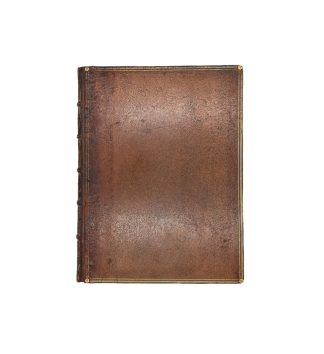CAVENDISH, George.
The Negotiations of Thomas Woolsey, The great Cardinall of England, Containing his life and Death.
London, William Sheeres, 1641£1,650.00
FIRST EDITION. 4to. (xiv) 118. Three quarter page frontisp. engraving of Cardinal Woolsey, tp with woodcut vignette, ornamental head and tail pieces and floriated initials. Bookplate of John Dane (1899) to pastedown. Slight age yellowing, occasional light foxing, a very good, clean, well margined copy in C19 speckled calf by B.M. Pickering, gilt border with floral tool at corners, spine with floral gilt tools and gilt title, corners a bit rubbed, aeg.
Important and popular first edition of this biographical account of Cardinal Thomas Wolsey’s by George Cavendish (1497-c. 1562). The Oxford Dictionary of National Biography calls it the “most important single contemporary source for Wolsey’s life” which also provides a “detailed picture of early sixteenth-century court life and of political events in the 1520s, particularly the divorce proceedings against Catherine of Aragon”. Although the text was not published while Cavendish was alive, it was circulated widely in manuscript, and even used by Shakespeare in his play Henry VIII; Samuel Weller Singer states that Shakespeare “merely put Cavendish’s words into verse.”
Thomas Wolsey (1473-1530) was an English archbishop, statesman, Lord Chancellor and cardinal of the Catholic Church. Wolsey became Henry VIII’s almoner in 1509, and his power grew to the point he was viewed as ‘alter rex’ and was Henry VIII’s closest and most trusted advisor. However, Wolsey failed to negotiate an annulment to Henry’s marriage to Catherine of Aragon and fell into disrepute; consequentially stripped of his many government titles. Perhaps fortuitously, he died of a heart attack on his way to trial.
Cavendish entered the service of Cardinal Woolsey in 1522 as gentleman-usher and remained with him until Wolsey’s death. This intimate position meant that Cavendish spent many hours at Wolsey’s side, indulging his taste for lavish entertainments. He became acquainted with Anne Boleyn, though he did not approve of her animosity towards the Cardinal. Cavendish remained faithful to Wolsey even when he fell into disrepute; upon his death Cavendish was called to the Privy Council and interviewed on Wolsey’s latest acts and words. Because he spoke with such dignity, the council did not punish him for his loyalty to a disgraced figure, and Cavendish retired aged just 30 to his estate at Glemsford, West Suffolk.
Cavendish probably recorded Woolsey’s conversations and movements for a number of years prior to the composition of this biography. It remains the sole authentic record of many pivotal moments in Tudor history, the details of which otherwise would be unknowable. The work is often praised for its attention to detail, simplicity and vividness. It was finished in 1557 and provided a rare insight into the tumultuous English court during this period “which appealed to the English appetite for drama” (Wiley, Paul. ‘Renaissance Exploitation of Cavendish’s Life of Wolsey’, 1946).
ESTC R223198; Lowndes Vol II 396; Brunet Vol II 1701.In stock








